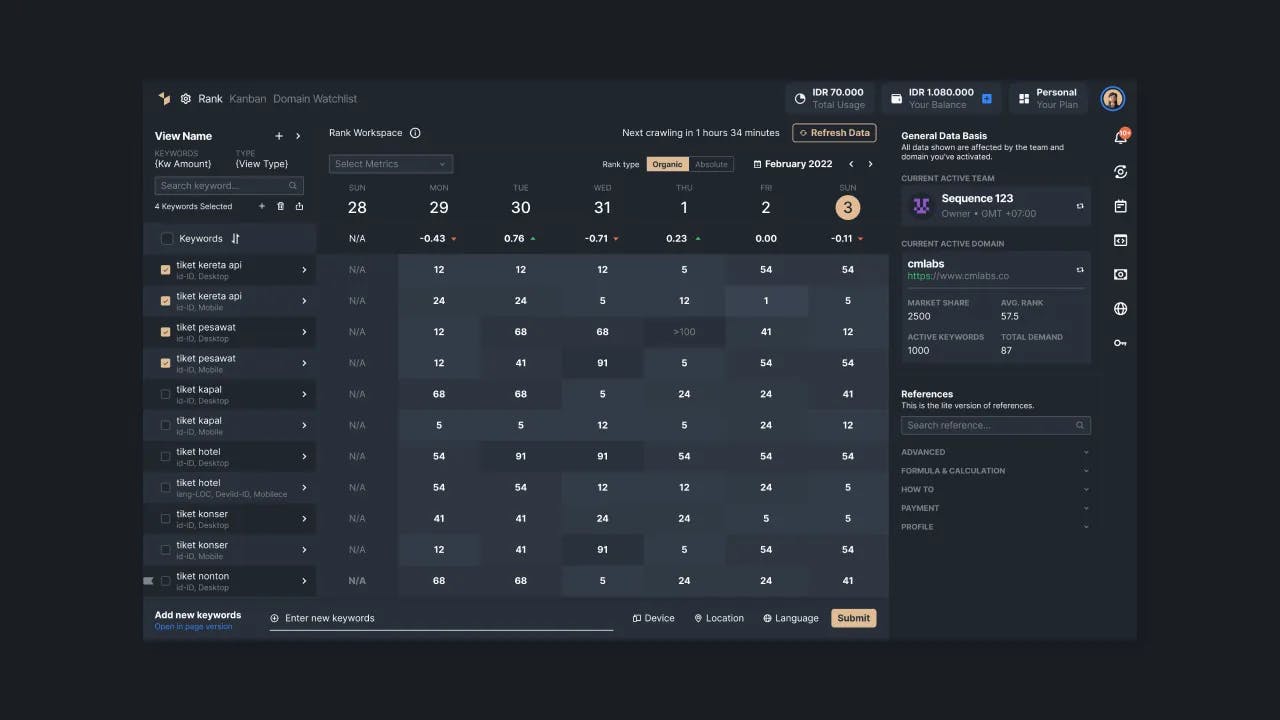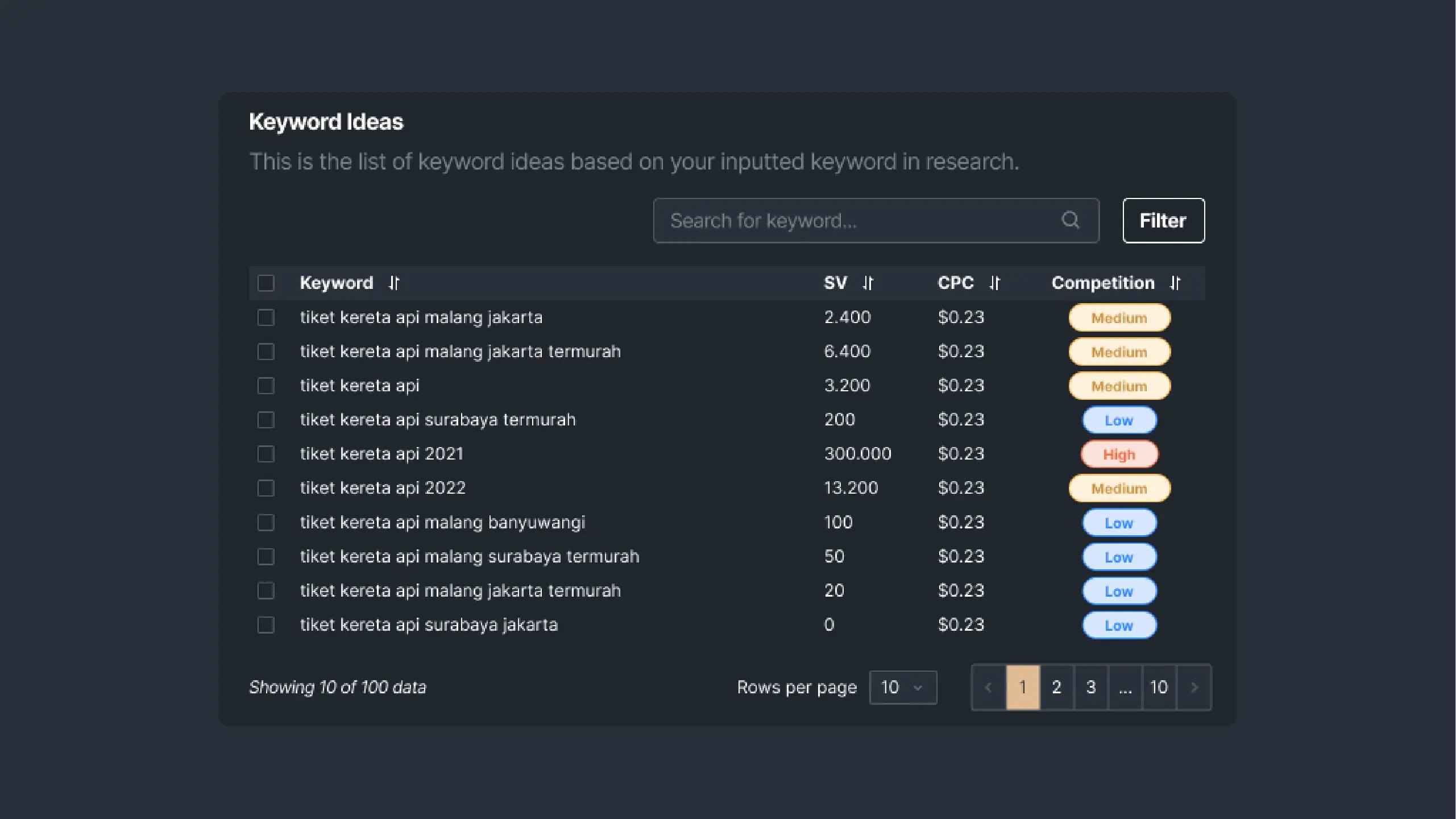In monitoring website [performance through keyword ranking, knowing the ranking distribution of all keywords is essential. This lets the website owner understand their keyword position distribution in the search result.
However, this is not easy to monitor all the keywords to see the ranking distribution. By that, it means that you will need a tool that can automate this task. To get a better understanding of keyword ranking distribution, this article will help.
What Is Ranking Distribution?
Ranking distribution in SEO refers to the way a website's pages or URLs are positioned across the search engine results page (SERP) for specific keywords or search queries. When a search is conducted, search engines like Google display a list of relevant results, with each result assigned a numerical ranking.
Ranking distribution examines how a website's pages are distributed among different positions on the SERP, typically ranging from the top position (rank 1-3) to lower positions (e.g., rank 10-20 and beyond).
For example, if a website has multiple pages that rank on the first page of Google's SERP for various keywords, it has a strong ranking distribution. Conversely, if a website's pages are scattered across multiple pages or poorly ranked, its ranking distribution may be weak.
Why We Need to Monitor Ranking Distribution?
You might think why do we care about ranking distribution while we can just monitor each keyword separately? These things might help you to think about the importance of monitoring ranking distribution in SEO.
Performance Assessment: Monitoring ranking distribution allows website owners and SEO professionals to assess the effectiveness of their SEO efforts. It provides insights into how well a website ranks for various keywords and search queries, indicating whether the SEO strategy is driving positive results or needs adjustments.
Visibility and Organic Traffic: Ranking distribution directly impacts a website's visibility in search engine results. Websites that rank well for a diverse set of keywords and occupy higher positions on the SERP are more likely to attract organic traffic. Tracking ranking distribution helps uncover the website's overall visibility and potential to capture organic clicks.
Keyword Optimization: By tracking ranking distribution, SEO practitioners can identify which keywords are performing well and which ones may require optimization.
Tracking Progress Over Time: Regularly tracking ranking distribution provides historical data that showcases SEO progress over time. Comparing past ranking reports helps determine the effectiveness of SEO efforts and identifies areas where improvements have been made.
Brief Review of SERP Elements
The SERP consists of various elements, each serving a specific purpose in providing users with the most relevant and diverse information. Thus, you need to understand all of it before getting the ranking distribution.
Organic Results: Organic results are the standard search results that are ranked based on relevance and SEO factors, excluding paid advertisements.
Featured Snippets: Featured snippets are brief text excerpts that appear above the organic results, directly answering a user's query. Websites that provide clear and concise answers have a chance to be featured in this prominent position.
Knowledge Panels: Knowledge panels provide detailed information about specific entities, such as businesses, public figures, or landmarks. They draw information from various sources, offering users quick access to essential details.
Local Pack: The local pack displays local business listings, typically accompanied by a map. It is triggered when a user's search query indicates local intent, such as "restaurants near me."
Paid Search Ads: Paid search ads appear at the top and sometimes bottom of the SERP. Advertisers bid on keywords to have their ads shown when relevant search terms are entered.
People Also Ask: The "People Also Ask" section presents related questions that users may find helpful. It encourages users to explore more topics related to their original search query.
How to Monitor Keyword Ranking Distribution?
Monitoring keyword ranking distribution involves utilizing Search Stats and techniques to track how well a website ranks for different keywords across the search engine results page (SERP).
Here are the foremost important steps in doing it.
1. Selecting the Right SEO Tool
Choose a reliable SEO tool that offers comprehensive keyword-tracking features. Ensure the tool can track rankings for a wide range of keywords and provides accurate and up-to-date data. You can use Sequence Stats to do almost all SEO tasks you have.
Ranging from tracking keyword ranking, conducting keyword research, monitoring competitors’ keywords, collaborating across teams, doing site audits and so many more.

Picture 1: Sequence Stats Dashboard
2. Compile a Keyword List
Create a list of relevant keywords that are essential to your website's content and target audience. Use keyword research tools to identify high-volume keywords, long-tail keywords, and terms related to your niche.
You can even use Sequence Stats Keyword Ideas in generating relevant keywords to track within your next content. Try the Keyword Ideas feature like this below.

Picture 2: Keyword Ideas feature in Sequence Stats
3. Organize Keywords by Categories
Categorize keywords based on their relevance and the pages or content they are associated with. This organization helps in analyzing ranking distribution for specific sections of your website.
All you need to do is create Views in the Rank Dashboard so that you can monitor different keyword groups separately.

Picture 3: View feature in Sequence Stats.
4. Analyze Ranking Distribution Reports
Review the ranking reports generated by the SEO tool. These reports will show the positions of your website's pages for each keyword. Pay attention to the distribution of rankings and identify patterns or trends.
Go to the Stats dashboard, scroll, and find the Rank Distribution statistics that tell you the data. The visualization of how your keyword rank will help you understand more about your position in the SERP.

Picture 4: Rank Distribution statistics in the Stats Dashboard.
This way, you will be more informed about website performance and how you should optimize the current state.
Wrap Up
That's it, you have the idea of ranking distribution in SEO and how to track it efficiently. By diligently monitoring keyword ranking distribution, you can make data-driven decisions to improve your website's organic visibility and SEO performance. To help you automate those tasks, sign up to Sequence Stats and enjoy the free trial you can use to explore all features available.